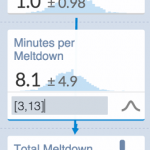Making an entire Polyfill For The HTML5 small print part
HTML5 presented a bunch of latest tags, one in every of which is <small print>. This part is an answer for a typical UI element: a collapsible block. nearly each framework, including Bootstrap and jQuery UI, has its own plugin for a similar answer, but none conform to the HTML5 specification — most probably as a result of most had been around long ahead of <details> acquired exact and, therefore, signify different methods. a normal component allows everybody to make use of the same markup for a specific form of content. That’s why developing a powerful polyfill is smart1.
Disclaimer: this is somewhat a technical article, and whereas I’ve tried to attenuate the code snippets, the article nonetheless incorporates relatively a couple of of them. So, be prepared!
existing options Are Incomplete
I’m no longer2 the first individual3 to take a look at to implement this kind of polyfill. unfortunately, all other options exhibit one or another drawback:
- No give a boost to for future content material
support for future content is extremely treasured for single-page purposes. without it, you would need to invoke the initialization perform each time you add content material to the web page. basically, a developer desires so that you can drop<important points>into the DOM and be finished with it, and no longer have to fiddle with JavaScript to get it going. - now not a true polyfill for the
openattribute
according to the specification4,<details>comes with theopenattribute, which is used to toggle the visibility of the contents of<details>. - The
toggleexperience is lacking
This experience is a notification that aimportant pointspart has changed itsopenstate. Ideally, it will have to be a vanilla DOM adventure.
on this article we’ll use better-dom5 to make issues simpler. the main reason is the reside extensions6 function, which solves the issue of invoking the initialization operate for dynamic content material. (For extra data, read my unique article about live extensions7.) moreover, better-dom outfits live extensions with a set of tools that don’t (yet) exist in vanilla DOM but that come in useful when imposing a polyfill like this one.
 8
8small print part in Safari eight (View huge version18149)inspect the are living demo10.
Let’s take a more in-depth look at all of the hurdles now we have to beat to make <details> available in browsers that don’t reinforce it.
Future content strengthen
to start, we need to declare a live extension for the "small print" selector. What if the browser already supports the part natively? Then we’ll need to add some function detection. that is simple with the non-compulsory second argument situation, which prevents the good judgment from executing if its worth is the same as false:
// Invoke extension provided that there is not any native fortify var open = DOM.create("important points").get("open"); DOM.extend("details", typeof open !== "boolean", constructor: function() console.log("initialize <details>…"); ); As you will see that, we are looking to notice native reinforce by means of checking for the open property, which obviously simplest exists in browsers that recognize <small print>.
What units DOM.prolongeleven apart from a easy name like record.querySelectorAll is that the constructor operate executes for future content material, too. And, sure, it really works with any library for manipulating the DOM:
// you should use better-dom… DOM.find("body").append( "<important points><abstract>TITLE</abstract><p>textual content</p></small print>"); // => logs "initialize <important points>…" // or another DOM library, like jQuery… $ ("physique").append( "<important points><summary>TITLE</summary><p>textual content</p></small print>"); // => logs "initialize <important points>…" // and even vanilla DOM. file.physique.insertAdjacentElement("beforeend", "<important points><abstract>TITLE</summary><p>text</p></details>"); // => logs "initialize <important points>…" within the following sections, we’ll substitute the console.log name with an actual implementation.
Implementation Of <abstract> behavior
The <small print> component may take <summary> as a baby component.
the first abstract element youngster of important points, if one is current, represents an overview of details. If no youngster summary component is present, then the consumer agent should provide its personal legend (for instance, “details”).
Let’s add mouse give a boost to. A click on the <abstract> component must toggle the open attribute on the dad or mum <important points> element. that is what it looks as if the use of better-dom:
DOM.lengthen("important points", typeof open !== "boolean", constructor: perform() this .youngsters("summary:first-child") .forEach(this.doInitSummary); , doInitSummary: perform(summary) summary.on("click", this.doToggleOpen); , doToggleOpen: operate() // We’ll duvet the open property price later. this.set("open", !this.get("open")); ); The youngsters approach returns a JavaScript array of components (now not an array-like object as in vanilla DOM). therefore, if no <abstract> is found, then the doInitSummary function is just not carried out. additionally, doInitSummary and doToggleOpen are private features12, they all the time are invoked for the present component. So, we are able to pass this.doInitSummary to Array#forEach without extra closures, and everything will execute appropriately there.
Having keyboard strengthen along with mouse give a boost to is excellent as neatly. but first, let’s make <abstract> a focusable component. a customary solution is to set the tabindex attribute to zero:
doInitSummary: operate(summary) // Makes summary focusable summary.set("tabindex", 0); … Now, the consumer hitting the gap bar or the “Enter” key should toggle the state of <details>. In better-dom, there is not any direct get admission to to the experience object. instead, we wish to declare which residences to grasp the usage of an extra array argument:
doInitSummary: function(abstract) … summary.on("keydown", ["which"], this.onKeyDown); note that we are able to reuse the prevailing doToggleOpen function; for a keydown event, it simply makes an extra check on the primary argument. For the clicking event handler, its price is all the time equal to undefined, and the end result will be this:
doInitSummary: perform(summary) summary .set("tabindex", zero) .on("click", this.doToggleOpen) .on("keydown", ["which"], this.doToggleOpen); , doToggleOpen: perform(key) thirteen this.set("open", !this.get("open")); // Cancel form submission on the ENTER key. return false; Now we now have a mouse- and keyboard-obtainable <small print> element.
<abstract> component aspect instances
The <abstract> part introduces a number of side cases that we should consider:
1. When <summary> Is a child but no longer the primary child
 13
13summary part is not the primary child. (View large version18149)Browser vendors have tried to repair such invalid markup by moving <summary> to the position of the first child visually, even when the element is just not in that position in the flow of the DOM. I used to be perplexed through such habits, so I requested the W3C for clarification15. The W3C proven that <summary> have to be the first youngster of <small print>. when you take a look at the markup within the screenshot above on Nu Markup Checker16, it will fail with the following error message:
Error: element abstract no longer allowed as kid of component details in this context. […] Contexts by which part abstract is also used: As the first kid of a details component.
My means is to maneuver the <summary> component to the place of the primary child. In different phrases, the polyfill fixes the invalid markup for you:
doInitSummary: function(summary) // ensure that abstract is the first youngster if (this.youngster(zero) !== abstract) this.prepend(abstract); … 2. When the <abstract> part isn’t existing
 17
17summary component will not be current (View massive model18149)As you’ll discover in the screenshot above, browser vendors insert “small print” as a legend into <abstract> in this case. The markup stays untouched. sadly, we can’t reach the same with out gaining access to the shadow DOM19, which unfortunately has weak reinforce20 at present. still, we will set up <summary> manually to comply with standards:
constructor: operate() … var summaries = this.youngsters("summary"); // If no youngster abstract component is current, then the // person agent will have to provide its own legend (e.g. "details DOM.create("abstract>`small print`")); reinforce For open Property
should you try the code beneath in browsers that toughen <important points> natively and in others that don’t, you’ll get different results:
small print.open = authentic; // <small print> changes state in Chrome and Safari important points.open = false; // <small print> state adjustments back in Chrome and Safari In Chrome and Safari, altering the value of open triggers the addition or removing of the attribute. other browsers do not reply to this because they do not reinforce the open property on the <important points> element.
residences are different from simple values. they have a pair of getter and setter capabilities which might be invoked every time you learn or assign a new worth to the sphere. And JavaScript has had an API to declare residences considering that model 1.5.
the excellent news is that one old browser we’re going to use with our polyfill, internet Explorer (IE) eight, has partial toughen for the Object.defineProperty operate. The challenge is that the perform works handiest on DOM elements. however that’s precisely what we’d like, right?
there is a drawback, though. when you try to set an attribute with the same title in the setter operate in IE 8, then the browser will stack with countless recursion and crashes. In outdated versions of IE, changing an attribute will trigger the alternate of the suitable property and vice versa:
Object.defineProperty(component, "foo", … set: function(value) // the line below triggers limitless recursion in IE eight. this.setAttribute("foo", price); ); So that you could’t modify the property without altering an attribute there. This issue has prevented builders from using the Object.defineProperty for relatively a long time.
the good news is that I’ve discovered a solution.
restoration For infinite Recursion In IE eight
sooner than describing the solution, I’d like to present some background on one characteristic of the HTML and CSS parser in browsers. for those who weren’t mindful, these parsers are case-insensitive. as an example, the rules under will produce the same end result (i.e. a base purple for the textual content on the page):
physique colour: pink; /* the rule under will produce the same outcome. */ body coloration: crimson; the identical goes for attributes:
el.setAttribute("foo", "1"); el.setAttribute("FOO", "2"); el.getAttribute("foo"); // => "2" el.getAttribute("FOO"); // => "2" furthermore, that you can’t have uppercased and lowercased attributes with the identical name. however which you can have each on a JavaScript object, as a result of JavaScript is case-sensitive:
var obj = foo: "1", FOO: "2"; obj.foo; // => "1" obj.FOO; // => "2" a while in the past, i found that IE eight helps the deprecated legacy argument lFlags21 for attribute strategies, which lets you exchange attributes in a case-sensitive method:
lFlags[in, optional]
- type: Integer
- Integer that specifies whether or not to use a case-delicate search to find the attribute.
needless to say the limitless recursion happens in IE eight for the reason that browser is attempting to update the attribute with the same name and therefore triggers the setter perform over and over. What if we use the lFlags argument to get and set the uppercased attribute price:
// Defining the "foo" property but using the "FOO" attribute Object.defineProperty(element, "foo", get: operate() return this.getAttribute("FOO", 1); , set: function(price) // No infinite recursion! this.setAttribute("FOO", price, 1); ); As chances are you’ll expect, IE eight updates the uppercased container FOO on the JavaScript object, and the setter function does now not set off a recursion. moreover, the uppercased attributes work with CSS too — as we said at first, that parser is case-insensitive.
Polyfill For The open Attribute
Now we are able to define an open property that works in each browser:
var attrName = document.addEventListener ? "open" : "OPEN"; Object.defineProperty(small print, "open", get: perform() var attrValue = this.getAttribute(attrName, 1); attrValue = String(attrValue).toLowerCase(); // deal with boolean attribute worth set: operate(value) if (this.open !== value) console.log("firing toggle experience"); if (price) this.setAttribute(attrName, "", 1); else this.removeAttribute(attrName, 1); ); take a look at how it works:
small print.open = proper; // => logs "firing toggle adventure" details.hasAttribute("open"); // => authentic small print.open = false; // => logs "firing toggle experience" small print.hasAttribute("open"); // => false superb! Now let’s do an identical calls, however this time the usage of *Attribute strategies:
important points.setAttribute("open", ""); // => silence, but fires toggle event in Chrome and Safari important points.removeAttribute("open"); // => silence, however fires toggle experience in Chrome and Safari the explanation for such behavior is that the relationship between the open property and the attribute must be bidirectional. each time the attribute is modified, the open property must replicate the change, and vice versa.
the most simple go-browser answer I’ve discovered for this problem is to override the attribute methods on the goal component and invoke the setters manually. This avoids bugs and the efficiency penalty of legacy propertychange22 and DOMAttrModified23 situations. brand new browsers reinforce MutationObservers24, but that doesn’t cover our browser scope.
ultimate Implementation
obviously, walking through all of the steps above when defining a brand new attribute for a DOM part wouldn’t make sense. we’d like a utility operate for that which hides pass-browser quirks and complexity. I’ve added any such function, named defineAttribute25, in better-dom.
the primary argument is the identify of the property or attribute, and the second is the get and set object. The getter perform takes the attribute’s worth as the primary argument. The setter perform accepts the property’s value, and the again statement is used to update the attribute. this kind of syntax allows us to cover the trick for IE eight where an uppercased attribute name is used in the back of the scenes:
constructor: perform() … this.defineAttribute("open", get: this.doGetOpen, set: this.doSetOpen ); , doGetOpen: perform(attrValue) attrValue = String(attrValue).toLowerCase(); return attrValue === "" , doSetOpen: function(propValue) if (this.get("open") !== propValue) this.hearth("toggle"); // adding or eliminating boolean attribute "open" return propValue ? "" : null; Having a real polyfill for the open attribute simplifies our manipulation of the <details> component’s state. again, this API is framework-agnostic:
// you need to use higher-dom… DOM.in finding("important points").set("open", false); // or any other DOM library, like jQuery… $ ("details").prop("open", genuine); // and even vanilla DOM. file.querySelector("small print").open = false; Notes On Styling
The CSS part of the polyfill is simpler. It has some general type principles:
abstract:first-youngster ~ * display: none; important points[open] > * show: block; /* hide native indicator and use pseudo-part as a substitute */ summary::-webkit-details-marker display: none; I didn’t wish to introduce any extra components in the markup, so obtrusive choice is to fashion the ::ahead of pseudo-part. This pseudo-part is used to point the current state of <details> (in step with whether or not it’s open or not). but IE eight has some quirks, as usual — namely, with updating the pseudo-part state. I received it to work properly best by way of changing the content property’s value itself:
details:before content: 'BA'; … small print[open]:sooner than content: 'BC'; For other browsers, the zero-border trick will draw a font-unbiased CSS triangle. With a double-colon syntax for the ::sooner than pseudo-part, we will observe ideas to IE 9 and above:
details::sooner than content material: ''; width: zero; peak: 0; border: strong transparent; border-left-coloration: inherit; border-width: zero.25em 0.5em; … become: rotate(0deg) scale(1.5); small print[open]::ahead of content: ''; change into: rotate(90deg) scale(1.5); the ultimate enhancement is a small transition on the triangle. unfortunately, Safari does not observe it for some purpose (most likely a computer virus), but it degrades well with the aid of ignoring the transition utterly:
details::sooner than … transition: change into 0.15s ease-out;  26
26you will find the entire source code on Github27.
hanging it all together
some time ago, I began the use of transpilers in my projects, and they’re nice. Transpilers support supply information. which you can even code in an absolutely totally different language, like CoffeeScript as an alternative of JavaScript or less as an alternative of CSS and so forth. alternatively, my intention in the use of them is to lower needless noise in the supply code and to examine new features within the near future. That’s why transpilers do not go towards any standards in my tasks — I’m just using some extra ECMAScript 6 (ES6) stuff and CSS put up-processors (Autoprefixer28 being the principle one).
additionally, to discuss bundling, I quick found that distributing *.css files along with *.js is somewhat disturbing. In looking for an answer, i discovered HTML Imports29, which aims to unravel this kind of problem someday. At present, the characteristic has reasonably weak browser enhance30. And, frankly, bundling all of that stuff into a single HTML file is not top.
So, I constructed my very own method for bundling: better-dom has a operate, DOM.importStyles31, that allows you to import CSS ideas on a web web page. This function has been within the library for the reason that beginning as a result of DOM.extend uses it internally. seeing that i use better-dom and transpilers in my code anyway, I created a easy gulp task:
gulp.process("collect", ["lint"], operate() var jsFilter = filter("*.js"); var cssFilter = filter("*.css"); return gulp.src(["src/*.js", "src/*.css"]) .pipe(cssFilter) .pipe(postcss([autoprefixer, csswring, …])) // want to escape some symbols .pipe(substitute"/g, "$ &")) // and convert CSS ideas into JavaScript function calls .pipe(substitute(/([^]+)([^]+)/g, "DOM.importStyles("$ 1", "$ 2");n")) .pipe(cssFilter.restore()) .pipe(jsFilter) .pipe(es6transpiler()) .pipe(jsFilter.restoration()) .pipe(concat(pkg.title + ".js")) .pipe(gulp.dest("build/")); ); to maintain it easy, I didn’t put in any not obligatory steps or dependency declarations (see the full supply code32). normally, the compilation task accommodates the following steps:
- follow Autoprefixer to the CSS.
- Optimize the CSS, and develop into it into the sequence of
DOM.importStylescalls. - apply ES6 transpilers to JavaScript.
- Concatenate each outputs to a
*.jsfile.
And it works! i have transpilers that make my code clearer, and the only output is a single JavaScript file. any other benefit is that, when JavaScript is disabled, these fashion principles are totally overlooked. For a polyfill like this, such conduct is desirable.
Closing thoughts
As you will see, growing a polyfill just isn’t the perfect challenge. alternatively, the solution can be used for a reasonably long time: requirements do not alternate often and had been discussed at size behind the scenes. also everyone is using the same language and is connecting with the identical APIs which is a great thing.
With the well-liked common sense moved into utility functions, the supply code isn’t very complex33. because of this, at current, we in reality lack advanced tools to make robust polyfills that work on the subject of native implementations (or higher!). and that i don’t see just right libraries for this yet, sadly.
Libraries reminiscent of jQuery, Prototype and MooTools are all about offering additional sugar for working with the DOM. while sugar is excellent, we also want more utility capabilities to build more powerful and unobtrusive polyfills. without them, we might prove with a ton of plugins which might be exhausting to integrate in our initiatives. is also it’s time to maneuver into this path?
another technique that has arisen recently is web parts34. I’m in reality excited through tools like the shadow DOM, but I’m no longer sure if custom components35 are the future of web construction. furthermore, custom parts can introduce new issues if everybody begins growing their own custom tags for widespread uses. My level is that we wish to learn (and take a look at to beef up) the factors first ahead of introducing a new HTML element. fortuitously, I’m now not by myself on this; Jeremy Keith, for one, shares a identical view36.
Don’t get me unsuitable. customized components are a nice characteristic, and they no doubt have use cases in some areas. I look forward to them being implemented in all browsers. I’m simply now not certain if they’re a silver bullet for all of our problems.
To reiterate, I’d encourage developing more robust and unobtrusive polyfills. And we wish to build extra advanced instruments to make that occur more easily. the instance with <small print> displays that reaching the sort of intention as of late is that you can imagine. and that i imagine this direction is future-proof and the one we want to move in.
(al)
Footnotes
- 1 http://caniuse.com/#feat=important points
- 2 https://github.com/mathiasbynens/jquery-important points
- 3 https://github.com/manuelbieh/important points-Polyfill
- 4 http://www.w3.org/html/wg/drafts/html/grasp/interactive-components.html#the-important points-part
- 5 https://github.com/chemerisuk/better-dom
- 6 https://github.com/chemerisuk/better-dom/wiki/are living-extensions
- 7 http://www.smashingmagazine.com/2014/02/05/introducing-reside-extensions-higher-dom-javascript/
- 8 http://www.smashingmagazine.com/wp-content/uploads/2014/eleven/1-details-component-in-Safari-eight-large-opt.jpg
- 9
- 10 http://chemerisuk.github.io/higher-important points-polyfill/
- 11 http://chemerisuk.github.io/higher-dom/DOM.html#extend
- 12 https://github.com/chemerisuk/better-dom/wiki/reside-extensions#public-participants-and-personal-functions
- 13 http://www.smashingmagazine.com/wp-content material/uploads/2014/11/2-summary-element-is-no longer-the-first-youngster-massive-decide.jpg
- 14
- 15 http://lists.w3.org/Archives/Public/public-html/2014Nov/0043.html
- sixteen http://validator.w3.org/nu/
- 17 http://www.smashingmagazine.com/wp-content/uploads/2014/eleven/3-summary-component-does-now not-exist-huge-opt.jpg
- 18
- 19 http://www.w3.org/TR/shadow-dom/
- 20 http://caniuse.com/#feat=shadowdom
- 21 http://msdn.microsoft.com/en-us/library/ie/ms536739(v=vs.eighty five).aspx
- 22 http://msdn.microsoft.com/en-us/library/ie/ms536956(v=vs.85).aspx
- 23 https://developer.mozilla.org/en-US/docs/web/information/events/Mutation_events
- 24 https://developer.mozilla.org/en-US/medical doctors/internet/API/MutationObserver
- 25 http://chemerisuk.github.io/higher-dom/$ element.html#defineAttribute
- 26 http://www.smashingmagazine.com/wp-content material/uploads/2014/11/four-important points-component-animation.gif
- 27 https://github.com/chemerisuk/higher-details-polyfill/blob/grasp/src/better-important points-polyfill.css
- 28 https://github.com/postcss/autoprefixer
- 29 http://www.html5rocks.com/en/tutorials/webcomponents/imports/
- 30 http://caniuse.com/#feat=imports
- 31 http://chemerisuk.github.io/better-dom/DOM.html#importStyles
- 32 https://github.com/chemerisuk/better-dom-boilerplate/blob/master/gulpfile.js#L34
- 33 https://github.com/chemerisuk/better-small print-polyfill/blob/master/src/higher-small print-polyfill.js
- 34 http://webcomponents.org
- 35 http://w3c.github.io/webcomponents/spec/custom/
- 36 https://adactio.com/journal/7431
The publish Making a complete Polyfill For The HTML5 important points component appeared first on Smashing magazine.
(193)













